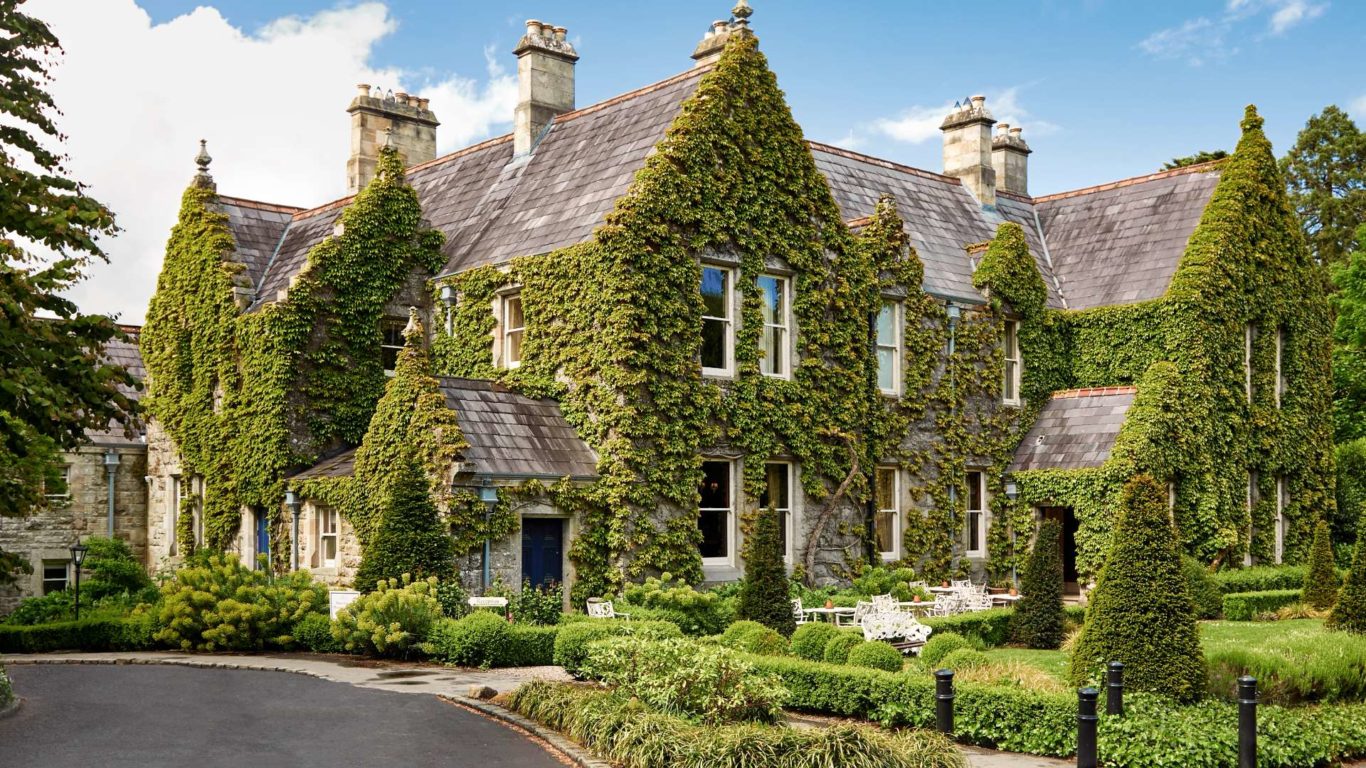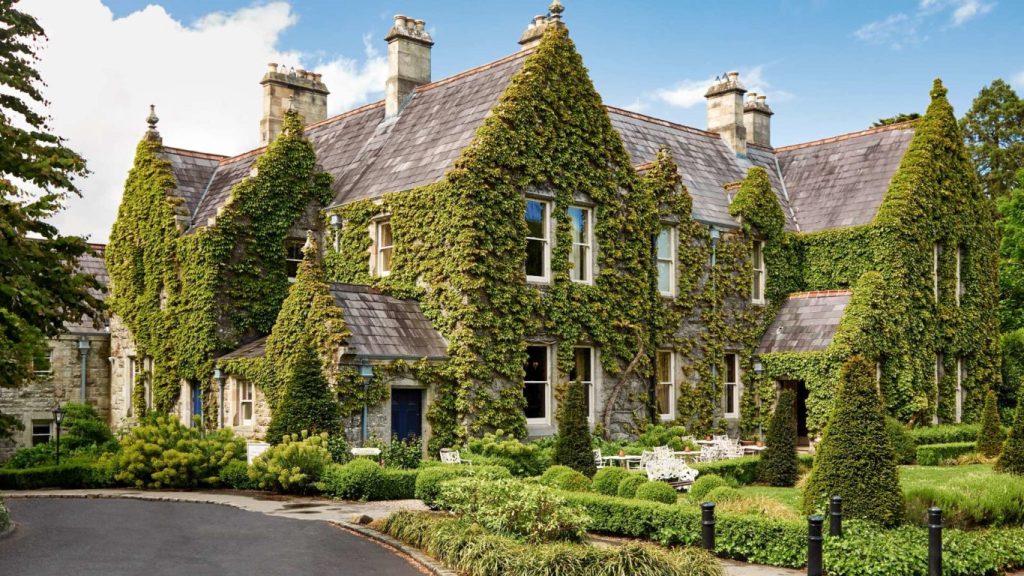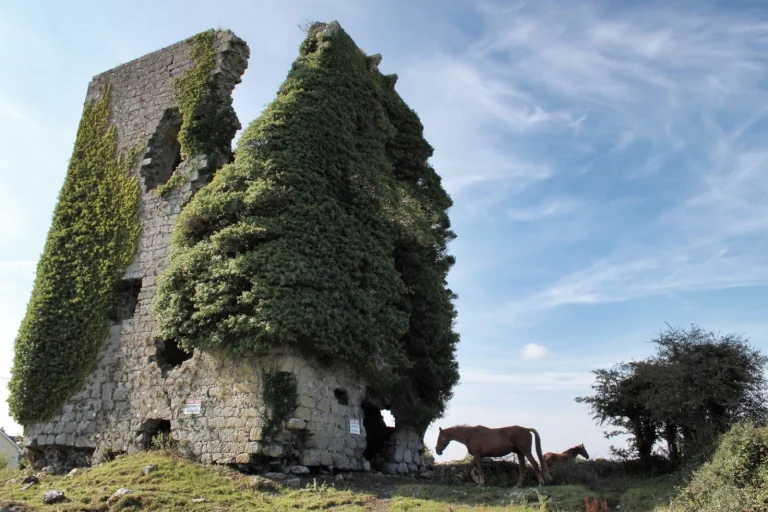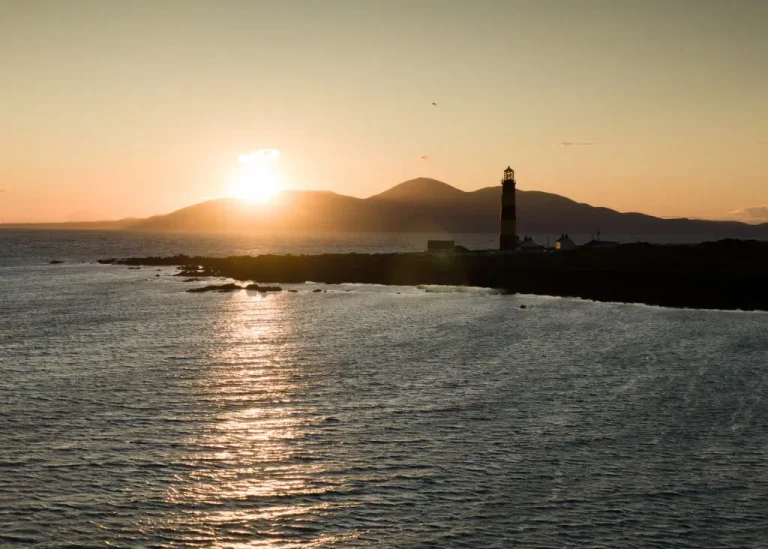

It stands there, as it always has, defying time, a monument to both magnificence and mortality. Castle Leslie, nestled in the rolling green hills of Monaghan, isn’t just a structure of stone and mortar—it’s a pulsating vein of history, myth, and unshakable Irishness. To walk its grounds is to traverse a space where grandeur and decay hold hands, where the past whispers in the walls and the future waits hesitantly at the gates.
The first thing you notice about Castle Leslie isn’t the castle itself but the air. There’s something peculiar about it, something ancient. It wraps around you, a kind of atmospheric embrace that promises secrets. It whispers stories of warriors, aristocrats, dreamers, and the countless ghosts who refuse to leave. Because that’s what Castle Leslie is—a place where stories refuse to die.
The Origins: A Family of Resilience and Vision
The Leslie family’s roots trace back to Scotland, where they were famed warriors and political players in the turbulent centuries of British and Irish history. In 1665, John Leslie, a bishop who had weathered political storms, purchased the estate in Monaghan, planting the Leslie family tree firmly in Irish soil. It was a bold move, staking claim in a land steeped in conflict and colonization, but it was also an act of profound vision.
Over the centuries, the Leslies built their home into the grand Castle Leslie we know today—a Gothic Revival masterpiece that emerged in the 19th century. Designed by Charles Lanyon, the architectural genius behind Belfast’s Queen’s University and the Palm House at Belfast’s Botanic Gardens, Castle Leslie was a statement: This family is here to stay.
And stay they did, through the centuries, weathering revolutions, wars, and the social upheavals that tore lesser families apart. The Leslies have held onto their home with a fierce, almost defiant grip, their story woven into the very fabric of Monaghan itself.
Architecture and Atmosphere: A Gothic Dream
Walking up the long driveway to Castle Leslie, you feel like you’re entering a dream—or maybe a nightmare, depending on how you handle ghosts. The castle, with its grey stone walls, pointed arches, and intricate carvings, looks like something out of a Brontë novel. It’s both romantic and haunting, a place that refuses to be tamed by time.
Inside, the atmosphere only intensifies. Each room is a tapestry of opulence and eccentricity. The library, with its floor-to-ceiling bookshelves, feels like it holds the secrets of the universe. The drawing room, bathed in natural light from its vast windows, whispers of elegant parties long gone. And the bedrooms—each named after a family member—are steeped in personality, a mix of luxury and quirkiness that reflects the Leslie spirit.
The Ghosts of Castle Leslie
No great Irish estate is complete without its ghosts, and Castle Leslie has plenty. Perhaps the most famous is Norman Leslie, who died in 1914 during World War I. They say his spirit returned to the castle, and many visitors have reported seeing a shadowy figure in military attire wandering the halls. He’s not a malevolent ghost, they assure us—just a Leslie who couldn’t quite let go.
Then there’s the Red Room, infamous for its spectral activity. Guests have reported sudden cold spots, mysterious whispers, and even the sensation of being watched. The Leslies themselves have embraced these ghosts, considering them part of the family. After all, what’s a castle without a few spirits roaming about?
Castle Leslie and Ireland’s History
The story of Castle Leslie isn’t just the story of a family—it’s the story of Ireland itself. During the turbulent years of the early 20th century, the castle became a silent witness to Ireland’s fight for independence. While many Anglo-Irish families abandoned their estates, the Leslies stayed, navigating the delicate balance of being part of the Anglo-Irish aristocracy while remaining deeply connected to their Irish roots.
During World War II, Castle Leslie opened its doors to soldiers, serving as a hospital and a sanctuary. Its halls, once filled with the laughter of grand parties, echoed with the moans of the wounded. It was a transformation that highlighted the resilience and adaptability of the Leslie family.
The Leslie Family: Eccentrics and Visionaries
The Leslie family is nothing if not colorful. From Sir John Leslie, the original bishop who secured the estate, to the modern-day Leslies, their history is a tapestry of bold personalities.
Perhaps the most eccentric of them all was Sir Jack Leslie, known affectionately as Uncle Jack. Born in 1916, Jack lived to be over 100 years old, and his life was a testament to adventure and irreverence. He partied in Rome, hobnobbed with Hollywood elites, and was known for his mischievous sense of humor. Even in his later years, he was a regular on the dance floor, proving that age is just a number.
The Modern Castle Leslie: A Sanctuary of Elegance
Today, Castle Leslie is more than just a family home—it’s a destination. The estate has been transformed into a luxurious retreat, offering everything from fine dining to equestrian experiences. Guests can stay in the castle itself, immersing themselves in its history, or opt for the more modern accommodations in the Lodge or the Old Stable Mews.
For those seeking a truly unique experience, Castle Leslie also offers weddings. In fact, it became internationally famous when Sir Paul McCartney married Heather Mills here in 2002. The estate’s stunning grounds and romantic ambiance make it one of the most sought-after wedding venues in Ireland.
Castle Leslie and the Arts
Castle Leslie has long been a haven for artists, writers, and musicians. W.B. Yeats was a frequent visitor, drawn to the castle’s mystique and the family’s literary connections. Today, the estate continues to inspire creativity, hosting workshops and events that celebrate the arts.
Visiting Castle Leslie
A visit to Castle Leslie is an unforgettable experience. Whether you’re exploring its historic rooms, wandering its 1,000 acres of woodlands, or simply enjoying a quiet moment by the lake, the estate offers a rare combination of tranquility and intrigue.
If you’re looking for an escape that combines history, luxury, and a touch of the supernatural, Castle Leslie is the perfect destination. It’s a place where time slows down, where the past and present coexist, and where every corner holds a story waiting to be discovered.
A Place Beyond Time
Castle Leslie isn’t just a building; it’s a living entity. It breathes history and exhales mystery. It invites you in not just to admire its beauty but to feel its heartbeat. As you leave, you realize you’re not walking away from it—it’s following you, lodging itself in your memory, a reminder that in Ireland, the past is never really past.
It’s a place where ghosts dance with the living, where walls remember what we’ve long forgotten, and where the story is far from over. At Castle Leslie, you don’t just visit history—you become a part of it.







5 thoughts on “Castle Leslie in Monaghan: Where Ghosts, Grandeur, and Generations Collide”
Comments are closed.